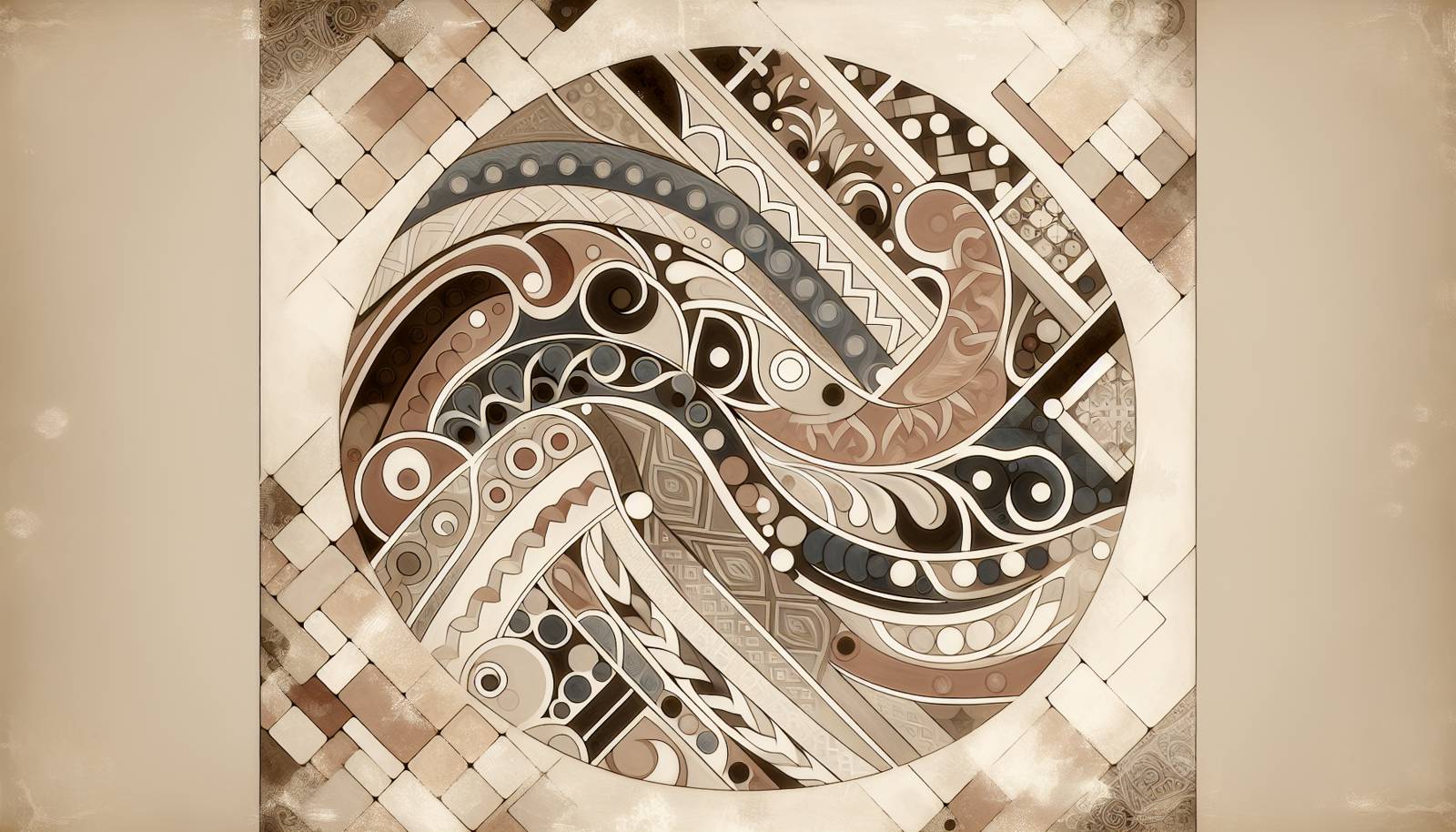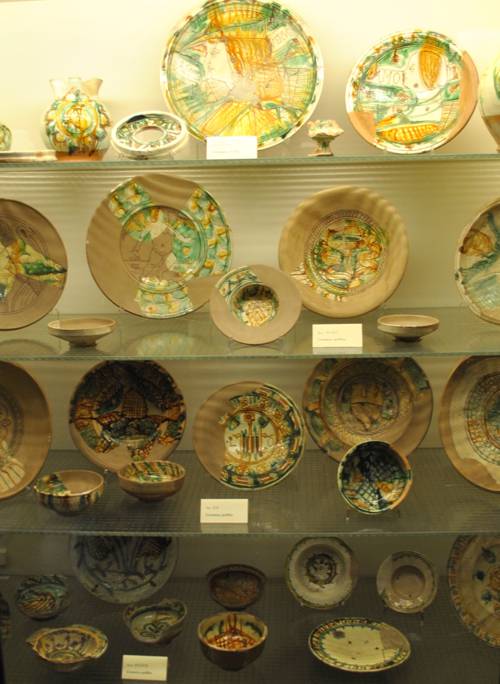
FAQ About The Role of Ceramics in Cultural Heritage

What is the historical significance of ceramics in cultural heritage?
Ceramics have played a crucial role in cultural heritage due to their durability and widespread use throughout history. They provide valuable insights into the daily lives, trade, customs, and artistic expressions of ancient civilizations. Archaeologists often find ceramics as part of their excavations, allowing them to reconstruct historical timelines and understand economic and social structures of the past.

How are ceramics used in archaeological studies?
In archaeological studies, ceramics are often analyzed to determine the age, origin, and purpose of an archaeological site. Techniques such as seriation, thermoluminescence, and petrography are used to study ceramic artifacts, helping archaeologists date sites and examine past human behaviors. Patterns, styles, and materials of ceramics can indicate trade relations, societal hierarchy, and cultural exchanges among ancient communities.

What are some common materials used in traditional ceramics?
Traditional ceramics are primarily made from clay, including earthenware, stoneware, and porcelain. Clay is mixed with water and often other materials like silica, feldspar, and mineral oxides. Different clays result in various qualities of ceramics, such as durability, texture, and color. The type of clay used often reflects the geographical features and resources available to the culture that produced the ceramics.

Why are ceramics considered an important aspect of cultural heritage?
Ceramics are considered an important aspect of cultural heritage because they reflect the artistry, technology, and cultural practices of a society. They are tangible artifacts that preserve cultural stories, including the evolution of crafts, aesthetic preferences, and functional uses in different epochs. Additionally, ceramics can survive for millennia, acting as historical records and offering insights into ancient civilizations long after other materials have decayed.

What techniques are employed to identify the origins of ancient ceramics?
Several techniques are used by archaeologists and researchers to identify the origins of ancient ceramics, including chemical analysis, petrographic analysis, and isotope studies. Chemical and mineralogical compositions can indicate the clay source location, while stylistic analysis helps pinpoint cultural and chronological origins. Thermoluminescence testing estimates the last time ceramics were fired, further assisting in dating and origin determination.

How do ceramics contribute to understanding ancient trade routes?
Ceramics contribute significantly to understanding ancient trade routes through their distribution patterns and stylistic influences. When similar ceramics are found in geographically distant areas, they may indicate trade or exchange relationships. Analysis of materials and manufacturing techniques can show how and where ceramics were produced and traded, highlighting economic ties and cultural exchanges between ancient communities.

What role do ceramics play in art history?
Ceramics have been pivotal in art history due to their versatility and expressive potential. As a medium for sculpture, decoration, and utilitarian objects, ceramics represent artistic progress and cultural values. They help art historians trace artistic movements and styles, understand local aesthetics, and appreciate the craftsmanship of various cultures. Ceramic art embodies both function and form, offering a distinctive view into the creative processes of historical artists.

Can the study of ceramics inform us about ancient technology?
Yes, the study of ceramics can reveal insights into ancient technology, including the methods of production, firing techniques, and material innovations used by past cultures. Advances such as the development of kilns, glazes, and different clay blends reflect technological ingenuity. The complexity and quality of ceramics often mirror the technological proficiency and resourcefulness of ancient civilizations.

What are some notable ancient cultures known for their ceramics?
Several ancient cultures are renowned for their ceramics, including the Chinese, Greeks, Romans, and Mesoamericans. The Chinese are famous for their porcelain and intricate designs, while Greek ceramics often feature detailed mythological narratives. Romans utilized ceramics for utility and decoration extensively, and Mesoamerican cultures, like the Maya and Aztecs, produced highly decorated pottery reflecting their rich cosmological beliefs.

How have ceramics evolved over time in cultural heritage contexts?
Ceramics have evolved significantly in cultural heritage contexts, influenced by shifts in technology, materials, and cultural exchanges. Innovations in kiln designs, glazing techniques, and international trade have diversified ceramic styles and uses. Over time, ceramics have transitioned from primarily utilitarian items to include intricate artworks and status symbols, representing both continuity and change in cultural practices.

Are there any common misconceptions about ceramics in cultural heritage?
A common misconception about ceramics in cultural heritage is that they are merely decorative. In reality, ceramics served both practical and ritualistic functions and often held significant cultural, economic, and social meanings. Another misconception is underestimating the technological sophistication required to produce ceramics, which often involved complex processes and detailed knowledge of material properties.

Why are ceramics often well-preserved compared to other ancient artifacts?
Ceramics are often well-preserved compared to other ancient artifacts due to their chemical and physical resilience. Fired clay undergoes a transformation that makes it robust against environmental changes, including moisture and temperature fluctuations. While organic materials like textiles and wood decay over time, ceramics can endure for millennia, making them valuable records of past human activities.

What is the impact of discovering ceramics on contemporary cultural heritage efforts?
Discovering ceramics has a profound impact on contemporary cultural heritage efforts as they aid in reconstructing historical narratives and preserving cultural identities. Artefacts like ceramics help museums, researchers, and cultural organizations develop educational programs, exhibitions, and publications that celebrate and communicate the richness of cultural histories. They also contribute to conservation efforts, ensuring that such material heritage is safeguarded for future generations.

How do museums preserve and display historical ceramics?
Museums employ several methods to preserve and display historical ceramics, including controlled environmental conditions, specialized lighting, and protective casings. Conservation techniques such as cleaning, restoration, and stabilization are used to maintain their integrity. Outreach programs and exhibitions are crafted to educate the public about the historical significance and craftsmanship of ceramics, ensuring ethical presentation and effective storytelling.

What is the significance of ceramics in everyday life in historical societies?
In historical societies, ceramics were integral to everyday life, used for cooking, storage, serving food, and carrying water. Their designs often reflected social status, community identity, and aesthetic tastes. Beyond utilitarian purposes, ceramics were also important in cultural rituals and offerings, underscoring their multifaceted significance in daily and spiritual realms in past communities.

How do ceramics reflect social and cultural changes throughout history?
Ceramics reflect social and cultural changes throughout history in their styles, production methods, and uses. Shifts in political power, economic conditions, and cultural influences are often evidenced in ceramic designs and techniques. For example, changes in material availability or trade conditions may lead to new ceramic forms or decorations, mirroring broader societal transformations and cultural interactions.

What are some conservation challenges associated with ancient ceramics?
Conservation challenges associated with ancient ceramics include dealing with fragile surfaces, structural weaknesses, and deteriorative processes such as salt efflorescence. Restorers must balance preserving original materials with ensuring stability and preventing further damage. Ethical considerations also arise in restoration processes, aiming to retain historical authenticity while allowing for public display and education.

How do ceramics inform us about ancient cultural identities?
Ceramics inform us about ancient cultural identities through their stylistic choices, manufacturing techniques, and uses. Decorations and shapes can symbolize cultural values, beliefs, and societal roles, acting as visual markers of identity. The ways ceramics were used—such as ceremonial versus everyday objects—can shed light on social hierarchies and communal practices, reflecting the identity and priorities of historical societies.

What role did ceramics play in ancient rituals and ceremonies?
Ceramics often played a critical role in ancient rituals and ceremonies, serving as vessels for offerings, libations, and sacred objects. The materials and designs used in ceremonial ceramics were frequently symbolic, dedicated to deities or ancestral spirits. This ritualistic use underscores the spiritual significance of ceramics, highlighting their role in maintaining cultural traditions and religious practices.

How does the study of ceramics contribute to education and public awareness about cultural heritage?
The study of ceramics contributes to education and public awareness about cultural heritage by offering tangible connections to past civilizations and their stories. It provides educators and museums with rich content for curricula and exhibitions, facilitating understanding of historical contexts, craftsmanship, and cultural evolutions. Public engagement through workshops, lectures, and hands-on activities helps inform and inspire appreciation for cultural heritage embodied in ceramics.
